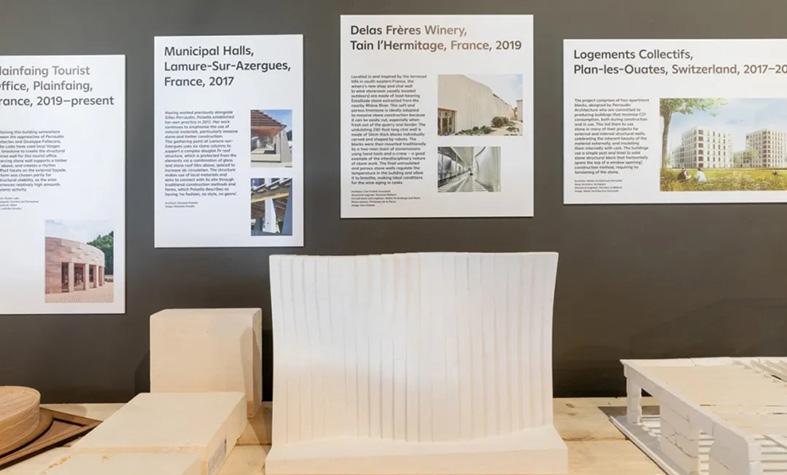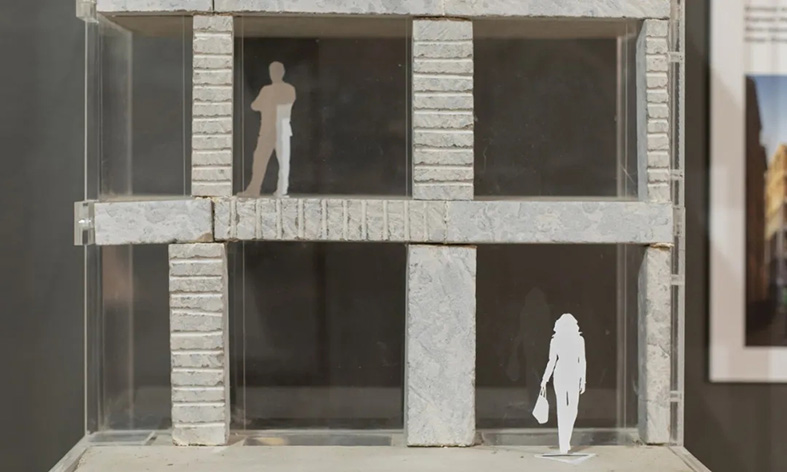| Stone industry after the new coronavirus |
| Time: 2020-09-14 View: 3370 Burst: |
|
As of mid- July with the deadly Covid-19 virus still spreading in many parts of the world, creating havoc with people's lives and the economies of the world, it may look presumptous to even think beyond the immediate moment. But businessmen, be they in natural stone or any other industry, are always obliged to think ahead beyond the immediate circumstances, this characteristic is, in fact, one of the essences of good management. This WONASA report is an attempt to identify in what way the industry dynamics will change in a more permanent way as a result of this devastating crisis, what current trends may result having been temporary, in which aspects there remains considerable uncertainty, and what kind of challenges lie ahead. For now it is still impossible to predict when the Covid-19 virus will no longer be a significant factor in our daily lives, there is so much of uncertainty. It is obvious that some countries will be more affected than others, and the recovery is also likely to be uneven in different regions. Some speculate that it could be a decade before the world economy recovers completely from the shock of the pandemic. The policies that different govermments adopt will also be an important factor during the process of recovery. Coming back to the natural stone industry, an economic blow of this magnitude will accelerate trends which were already underway, but may also create new ones. Below we examine the main trends which we think may have influence on our industry.

01 MACRO ENVIRONMENT A). PROTECTIONISM Post Coronavirus the world is likely to be more protectionist. The Governments in different countries are likely to be more sympathetic in those cases where the local stone industry is important and is seen to be affected in a negative way by imported stone. It is possible that some governments may be open to imposing higher import duties, or place other restrictions. B). GOVERNMENT SPENDING & PRIVATE INVESTMENT There will probably be higher government spending in the short term during the next 1 or 2 years as a measure to keep the economies afloat. For now fiscal discipline has been abandoned everywhere due to the emergency situation, and most of the spending is focused on avoiding a complete collapse of the economy and protecting weaker segments of society. The next phase of govermment spending may well be focused on trying to be more productive, by investing in infrastructure, for example. If this is so, this could mean the construction industry, a big employment generator, could receive some kind of boost. But over the medium term there will probably much less public sector spending in construction related activities due to other priorities like strengthening local health systems, reducing high debt levels, keeping the pension systems sustainable, etc. It is even possible that higher royalties on mining activity may be imposed as a way to increase government revenue. Many developing countries were already in a weak fiscal situation before the pandemic, they are likely to suffer from slow economic growth for many years. This will obviously affect in a negative way the prospects for a large number of stone companies. High income countries with relatively strong currencies have greater margin for fiscal and monetary initiatives, but even there tight budgets could keep the economies in an anaemic situation. There will possibly be cancellation of many commercial projects. There will probably be a surplus of office space in many cities and also closure of shopping malls as a result of greater digitalisation of the world economy in the form of home working and home delivery of just about everything, and also weaker economies. In USA a recent report mentioned that as many as 1/4 of shopping malls may close down in the next few years. Delays in new hotels projects are also likely due to the strong slowdown in tourism.

02 WORKING METHODS OF INDUSTRY A). For now business travel has reduced to negligible levels. This almost complete halt is being deeply felt by stone industry businessmen all over the world which thrives on personal relationships. No amount of video conferences completely substitute the face to face human contact. Once travelling is allowed to levels we have all been accustomed to, one can expect businessmen to initially make frequent trips just to make up for the time lost. Attendance as visitors in the traditional trade fairs is also likely to jump when they are first held once again, though it is less clear whether many stone companies, with tight resources, will be as willing to exhibit in the B to B trade fairs in the way they used to before. B).Video conferences have fast become the new standard way of communicating over long distance, and this will definitely substitute some of the business travel. In a very short period of time Zoom has become the favourite application of stone people. But also Facetime, WhatsApp videos, Microsoft Teams, etc. and many more. Expect this kind of communications to become normal. Webinars became very popular during the lockdown period when everyone was home, as a substitute for the conventional seminars, but in a very short period people have already started complaining of there being an excess of them- and the audience for these events is already declining sharply. C). While digital inspection overnight became an important industry norm in the natural stone since there was no other alternative, over the last 2 months people have also discovered its limitations. When it comes to inspecting slabs with clearly defined patterns, camera photos and videos can be a reasonable alternative. But when it comes to evaluating over images and videos the small but often important different shades and tones and the variations, then nothing can substitute a personal visit or sitting across the table with the architect or client and showing the different samples. Those who offer inspection services in stone should find more companies availing of their services. People spent even more time on social media during this period, but anyone who uses social media to sell natural stone would have already discovered this is no way business is done in this industry. Did anyone really sell anything at all ? People are already fed up of seeing hundreds of slab images accompanied by a contact number every single day in any social media group specialised in natural stone.

03 CONSUMER BEHAVIOUR A). For all the talk about sustainability and carbon footprint being an additional criteria for choosing a building material or a particular type of stone, it is unclear whether these arguments will move beyond being a sensitivity for a minority of architects, developers and other specifiers restricted geographically to north and western European countries, and sometimes in USA. In its application as a decoration material in small volumes, other criteria such as aesthetics and price etc. may remain, as before, the dominant criteria. B). More home working may lead to higher renovation activity in the short run as people make adaptations to separate work and home environment. General cautiousness about travelling will hit hard the economies of the tourist dependant countries for the next one or two years. But a side effect is a big jump in home improvements as people spend more time at home and spend money on landscaping, garden furniture, kitchens, bathrooms, terraces, fireplaces, etc.- in other words, greater demand for natural stone should result in applications for the home and in decoration. This phenomenon is already noticeable in North and Central Europe and some parts of USA these days. C). "Buy local" may be not just a govermment slogan but an argument which will get more receptivity from developers, architects, etc.who all want to feel they are supporting the local economy and employment in any way they can. This means stone companies and industry associations, especially in the medium and big sized countries, are well advised to focus seriously on developing their own local markets and not just concentrate on exports.

04 SIZE OF INDUSTRY A). It is hard to avoid the conclusion that after all the steady shrinking in size of the natural stone industry that took place over the last decade, in many countries the Coronavirus crisis will probably lead to closure of still more companies in the short and medium term. Most companies have already reduced the number of employees, it is hard to judge when they will re- hire again, that will depend on the dynamism of the country's economy and many other factors.
05 INNOVATION A). There has definitely been greater effort made by many companies all over the world in experimenting with new textures and finishes. Because of the fragmented nature of the industry and the severe limitations that currently exist, it has been hard to show the results of these efforts to clients. The tactile element of natural stone, so important to the industry, is for now, unused as an argument. It is hoped that once there is a certain normality this type of innovation will help to make natural stone attractive. B). Many companies all over the world are now making furniture in natural stone and incorporating design in everything they do. For now the promotion is being done in social media, but there is every reason to think that in normal conditions these companies will be making commercial efforts to look for a new type of customers, perhaps exhibit in different B to C trade fairs focused on interior design or home decoration, or furniture. Only time will tell how fast, a 'critical mass ' is reached in sales volumes in the new applications.

06 COMPETITION Well before the crisis, the natural stone industry was under pressure from the competition of the new generation of artificial materials. This crisis has obviously hurt their companies too, but they will not dissapear. Nothing changes regarding the dynamics related to this competition.
07 CONCLUSION Given the unexploited possibilities of natural stone, there will be possibilities for those companies willing to experiment in new applications and products. As mentioned above, there is likely to be a significant increase in home improvements in many markets in the short term providing a necessary cushion in the tough period. But survival, and eventually, growth, of companies and the industry will come from constantly experimenting and developing new applications, the same challenges that existed before this crisis. Creativity and imagination have always been drivers of growth in most industries, the natural stone people will find a ready new market with possibilities too if apply themselves with an open and fresh approach to their business.
|
















